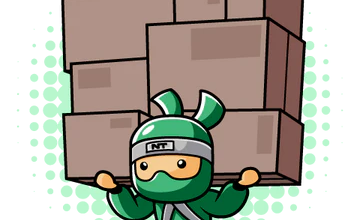Here are some skills and necessary information you’ll need to stitch successfully.
Machine operation and maintenance
General processes can be learned from machine manuals and basic manufacturer training. Your operator should know how to do the following actions in the machine’s controls:
- Load and clear files
- Change the starting position of the needle
- Set running speed
- Trace the extents of a design to check hoop clearance
- Navigate through stitches and check missed stitch/error repairs
On the physical side, the operator should be able to:
- Thread the machine
- Load a bobbin correctly
- Switch from flat hoops to the cap driver
- Oil and grease the correct parts on an appropriate schedule, tracking upkeep
Operating
Operators start slow, but the task of monitoring a machine and concurrently preparing subsequent runs speed up with practice. In the initial stages of learning, it is critical to observe the device running carefully. This is particularly true for future digitizers, as observation helps you understand interactions between thread, needle, garment, stabilizer, and design and how they produce a given result. Operating teaches you how embroidery physically works. To observe and analyze the way a design runs will help you learn to control the process.
Hooping
It can be challenging to hoop a garment straight to the seams (or adjacent structures like pockets) in such a way that it doesn’t appear skewed. The same is true for keeping tension firm without excessive stretch. Adjust hoops for differing garment thicknesses and materials. Adjustments are necessary so garments aren’t so tight it gets permanent ‘burn’ ring or so loose the material crumples and shifts during stitching. This taut, yet undistorted hooping is critical to achieving pucker-free designs. Cap framing is an entirely different animal, requiring you to smooth the cap around a cylindrical gauge and strap the crown into place. These elusive skills benefit from direct education or, at least, video examples. Hooping is one of those things one develops a feel for with experience, but benefits from evaluation from a pro early on.
The chief knowledge component for hooping is in selecting the proper stabilizer. A single piece of medium cutaway will suffice for most flat garments with a well-digitized design. Caps require only tearaway from pole to pole of the cap gauge to be appropriately stable. Those two types are ubiquitous, but modern embroiderers enjoy a broader selection of useful stabilizers. Stretchy performance materials and light garments benefit from thinner and similarly stretch-resistant no-show mesh, and performancewear-specific stabilizers, for example. Your stabilizer vendor often offers ‘recipes’ of tested combinations that serve as a good starting point.
Finishing
Though seemingly simple, finishing requires attention to detail for the best presentation of the completed decorated garment. Learn to carefully cut away most of the excess stabilizer leaving enough area to avoid cutting garments or nicking embroidery. Holes or unraveling designs are a total loss. Learn to trim surface connecting stitches that aren’t trimmed on the machine without leaving fuzzy ‘tails’ and how to steam, fold, and pack for presentation. Finishing is your last chance for quality control and determines the initial experience your customer has with your product. When the box opens, finishing comes first.




